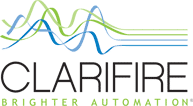A mere nine months post implementation and five webinars later, the Consumer Financial Protection Bureau (CFPB) announced proposed amendments to the Truth in Lending Act (TILA), Real Estate Settlement and Procedures Act (RESPA) Integrated Disclosures (TRID) rule on the last business day of July.
Intended to “formalize guidance in the rule, and provide greater clarity and certainty,” the 293-page document is not quite what the industry expected, which means lenders and vendors still have unanswered questions and clarification needs that will continue to impact loan production.
Under the current rule, the fear of being non-compliant, or worse subject to enforcement action, has kept a number of lenders from conducting business in areas that are not clear under TRID. Two examples being construction lending and housing finance lending.
Although the CFPB is proposing a number of positive changes to the rule, managing requirements and the impact organizationally will be a challenge. Implementing the resulting amendment, as well as what will certainly be ongoing clarification, necessitates a dynamic approach to systems configuration and operational workflow.

The CFPB has put forth four specific proposals for comment, a smattering of technical corrections and numerous smaller revisions pertaining to affiliate charges, cash-to-close calculations, construction loans, escrow account notifications and the list goes on. The key proposals for change to the rule are bulleted in the regulatory document and summarized below:
-
TRID/KBYO changed the total of payments calculation so it was not specifically contingent on the finance charge. The CFPB is proposing to incorporate tolerances for the total of payments calculations that parallel finance charge calculations; this also includes disclosures affected by the finance charge. The intent is to make it easier for lenders to reset tolerances when preparing the Closing Disclosure, albeit a slight exception as closing and funding timelines are still tight for this disclosure.
-
The TRID/KBYO rule provided partial exemption from disclosure requirements to Housing Finance Agencies (HFAs), non-profits and similar covered entities; however, exemption eligibility was impaired by other aspects of the rule. The amendment proposes clarification that will expand partial exemption eligibility, as well as modify 1-percent tolerance requirements to exclude recording fees and transfer taxes. The goal is to create more partnerships between lenders and HFAs.
-
Under the TRID/KBYO rule, cooperatives (co-ops) are considered secured by real property under state law, but the rule does not define co-ops that are considered as personal property. The proposed amendment would extend to all co-ops, irrespective of how the property is secured per state law, making rule compliance simpler and consistent for lenders.
-
Responding to industry requests, the CFPB has proposed commentary that seeks to clarify how lenders can provide disclosures to third parties, such as sellers and realtors, without infringing on the borrower’s consumer privacy rights. The CFPB acknowledges that this is an industry practice and has expanded on their guidance from the TRID/KBYO webinar series.
Comments are due by October 18, 2016. It is unclear when final regulation will be issued, but subsequent implementation will once again require the industry to be nimble in the rapid assimilation of regulation into technology.
The ability to incorporate regulatory change into operational workflow is an ongoing challenge for lenders. Agnostic innovative solutions that effectively interface with existing technology, as well as provide an informative, easy to use consumer interface, are the trend for the industry.
Lenders that waiver in committing to advance their technical platforms will not be able to keep up with regulatory change, or the competition. For example, servicers are now required to update strategic plans to reflect their capacity to incorporate cost reduction, process improvement and leverage technology. This adds complexity to an already difficult proposition for servicers who continue to struggle to ensure CFPB compliance and mitigate risk.
While under increasing pressure to grow profits and expand volume, servicers need to seriously consider how regulatory scrutiny will impact their business and deploy technology that will assist in bridging this divide. Servicers should leverage technology that provides an automated workflow platform that manages and tracks the activities required under TRID today, as well as in the future.
It is imperative that the workflow platform supports data management across multiple systems, optimizes lender processes and provides customizable views and mobile access to support borrowers in a progressive compliant manner. Ensure your team is ready for whatever regulatory implementation challenges come your way.
CEO and Founder
Jane has applied her vast experience (over 25 years) operating process-driven businesses to successfully redefine client-focused service. Jane has worked with expert programmers to apply cutting-edge web-based technology to automate complex processes in industries such as Financial Services, Healthcare and enterprise workflow. Her vision confirms Clarifire's trajectory as a successful, scaling, Software-as-a-Service (SaaS) provider. A University of South Florida graduate, Jane has received many awards related to her entrepreneurial skills.



